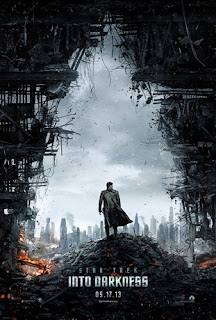Director:
J.J. Abrams
Writers:
Roberto Orci, Alex Kurtzman,
Stars:
Chris Pine, Zachary Quinto, Zoe Saldana
Storyline:
When the crew of the Enterprise is termed back home, they notice associate degree unbeatable force of terror from among their own organization has detonated the fleet and everything it stands for, departure our world in a very state of crisis. With a private score to settle, Captain church leads a hunting to a war-zone world to capture a 1 man weapon of mass destruction. As our heroes square measure propelled into associate degree epic chess of life and death, love are going to be challenged, friendships are going to be torn apart, and sacrifices should be created for the sole family church has left: his crew. Written by predominant footage
Your rating
See also Fast & Furious 6 (2013) Trailer
